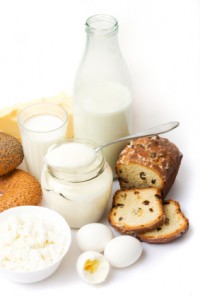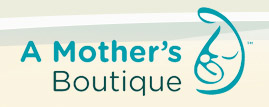 A good friend of mine, and frequent contributor to this blog, Beth Egan, sent me information yesterday about which foods contain high levels of pesticides and which don’t. I found this list astounding because some of our favorite foods were on the “avoid” list. My son eats a TON of strawberries and grapes and peaches and these foods are at the top of the “high pesticides” list! Here is a site where you can download a pocket guide to the worst and best foods.
A good friend of mine, and frequent contributor to this blog, Beth Egan, sent me information yesterday about which foods contain high levels of pesticides and which don’t. I found this list astounding because some of our favorite foods were on the “avoid” list. My son eats a TON of strawberries and grapes and peaches and these foods are at the top of the “high pesticides” list! Here is a site where you can download a pocket guide to the worst and best foods.
Being a scientist by training (I have a Ph.D. in genetics), I didn’t want to just read propaganda about why we should avoid foods, so I searched and searched the internet for some cold hard facts about pesticides and food. It was incredibly difficult to find, but here is a summary.
The “propaganda”:
There are lots of sights with seemingly helpful information but all are asking for donations or trying to sell you a “miracle cure” for pesticides, so I took the information that I found on their sites and searched for the data to back it up. Here are a few links:
The Evirnonmental Working Group
Six Wise
Dr. Ben Kim
The “pseudo-science” sites:
These are sites that claim scientific research, but don’t actually list any references or links to actual studies. They seem to be more “official” than the propaganda sites, but their content doesn’t seem to be backed up with raw data.
Consumer Health
Consumers Union
The best information that I found:
Some of the best, most informative information that I found online was on Wikipedia and the links contained therein. In typical Wikipedia tradition, they provide great information in a logical, non-propaganda format with links to actual research articles. The studies all seem to find that pesticide exposure is potentially dangerous with links to certain diseases (most notably leukemia) and are most dangerous when infants and children are exposed to them.
Most of the pesticide exposure that infants and children get is through their diets. And the advice seems to be pretty universal – switching to an Organic diet significantly (and immediately) reduces the number of pesticides that our children are exposed to.
The difficulty for most of us is that organic foods can be expensive and difficult to find (depending on where you live). So since we can’t buy everything organic – what do we need to buy organic and what don’t we?? And this is where sites like the propaganda sites listed above actually come in handy. While I didn’t initially trust their advice (because it was associated with sending them money or buying a product from them), what I did find through all of my research is that they are all consistent in their message and the “science” seems to support their claims. Pesticides are harmful and certain foods contain more than others. So, my advice – buy organic where ever possible – but especially when buying foods that are high in pesticides. The biggest offenders are MEATS – always buy organic meats whenever possible. And for fruits and vegetables, the lists found on these sites are really good guides.
Bottom line, while we can’t get everything we eat organically, we can avoid certain foods that are high in pesticides or buy those organically.
What do you do to protect your children from pesticides? Please leave a comment to share your tips.











I’m curious about the possible differences between the US and Canada with regard to the levels in meats. I know that most of the produce we get here in the winter comes from the same places as the US produce, but much of out meat is produced locally. Would we have the same regulations on feed, and that is where the toxins are coming from? (I’m not trying to be annoying, I’m legitimately asking if anyone knows). I’m also curious as to the levels found in poultry as the link that is posted directs you to information about beef, and we don’t eat a lot of beef in our house.
[…] This post was mentioned on Twitter by Judy Masucci, Annee Matthew. Annee Matthew said: Is Our Food Safe? http://bit.ly/cB6Xu5 – read this info about pesticides in the foods we eat! […]
Hi Jocelyn, it appears that poultry is much lower than beef: http://www.whatsonmyfood.org/food.jsp?food=PT I don’t know about the differences between Canada and the US, but I will post again if I find anything. Most of what is on Wikipedia is very US-focused. — Judy
Thank you! (I’m terrible with internet research.)
Strawberries grown in California use a pesticide not allowed in Canada. I’ve never been able to find out if those using the pesticide can be shipped to Canada.
Then of course there are countries where the regulations are few and enforcement is non-existent. I’m not saying Canada is very good at enforcement but we’ve got to have an easier time than countries that have a hard time affording clean water, police, and disaster relief.
Hi Judy, I’m glad that you found the Shopper’s Guide To Pesticides from EWG worthwhile enough to post an article about it. What a coincidence that this discussion was started only to have the latest study on pesticides and their relationship to children with ADHD come out today. In case some of you did not hear about this study you can read about it here: http://www.cnn.com/2010/HEALTH/05/17/pesticides.adhd/index.html?hpt=T2
Thank heavens that this issue is finally being covered by the media!
As far as the reliability of the Environmental Working Group. I highly recommend their site as a reliable source for accurate information. Yes, they do ask for donations but donations are not required to access their information. I attended their 10 Americans presentation here in Pittsburgh at the Children’s Institute. Ken Cook the president of EWG did the program. It was a real eye opener to the whole chemical body burden issue that our children are facing. The presentation is available to view on http://www.ewg.org Just do a search for the 10 Americans video. The bottom line is that they tested cord blood of newborns and on average newborns in the U.S. arrive in this world with an average of 200 industrial chemicals already in their blood. EWG has fought for over 10 years to get changes made in the laws to require that a chemical must be proven safe before it is put into any product that a child may come into contact with. Finally this year they have gotten 2 senators that agreed to sponsor the bill and introduce it. Now we can only hope that it doesn’t get watered down or fail to reach a vote. I can tell you the EWG has spent endless days, weeks, months and years fighting for our children in the halls of the capitol to get to this point.
The other organization that I recommend for information on the chemical issue is Healthy Child Healthy World http://www.healthychild.org They too seek donations and they also recommend companies that sell safer products but having been a presenter of their Healthy Home program I can assure you that they do not accept any company as a sponsor without proof that their products are truly non-toxic and safe.
One other non-profit that I highly recommend is the Cancer Project. http://www.cancerproject.org
All of these organizations are seeking funding for education and prevention, which in my opinion is where the focus should be rather than putting fortunes into research for cures, which many non-profits seem to do, with very slow results. If an equal amount of money was put into educating consumers and preventing illness by removing unsafe chemicals from the market we would not have a health care crisis in this country!
So I encourage everyone to educate yourself about what you are putting in your body, on your body, and in your homes. Then support those companies that provide safer alternatives to what is currently being purchased by most consumers. It may cost you more in the beginning but remember every time you purchase organic foods, non-toxic personal care and cleaning products, safe “green” home improvement products, etc. you are voting for a change. Why do you think some of the mainstream companies that continue to produce toxic products are now introducing a “green”line of products also? They want our money too. But don’t fall into their trap! I refuse to buy a “green” product from any company that still produces toxic products because their only motive for the “green” product is money plus I’m not so sure that their “green” products are truly safe.
There are also some great videos and books out there. Two videos that everyone should view are “Poisoned Waters” which was a PBS special and you actually can view it online, just google Poisoned Waters PBS and you will find it. The other video which I think is available currently on demand on Comcast and probably can be rented is Food Inc. Food Inc. was up for an academy award. Terrific documentary about our food system in the U.S. If you watch both of those and aren’t convinced to start buying more organic food and safer household products then read these books: The Unhealthy Truth by Robyn O’Brien and Green Goes With Everything by Sloan Barnett. Looking for a good fiction story with lots of truth in it read Eye of the Whale by Douglas Carlton Abrams.
To conclude the CDC predicts that babies being born today will not have the life expectancy that the adults of today have. Let’s prove them wrong by changing what our little ones eat and by limiting their exposure to toxins!
Thanks for the awesome comment Beth! I should have let you write the article! You are a wealth of great information and a super-resource.
–Judy
[…] post on Sunday about pesticides in our food got me to thinking….now that the weather is warmer, my family is going out for more walks […]
[…] a Comment Along the lines of my recent posts on pesticides and food and our lawns, I thought you might be interested in this year-long study which will be featured on […]
Wonderful posts! Knowing how safe our foods are so important. I’ll take note of what I’ve read in here. Thanks.